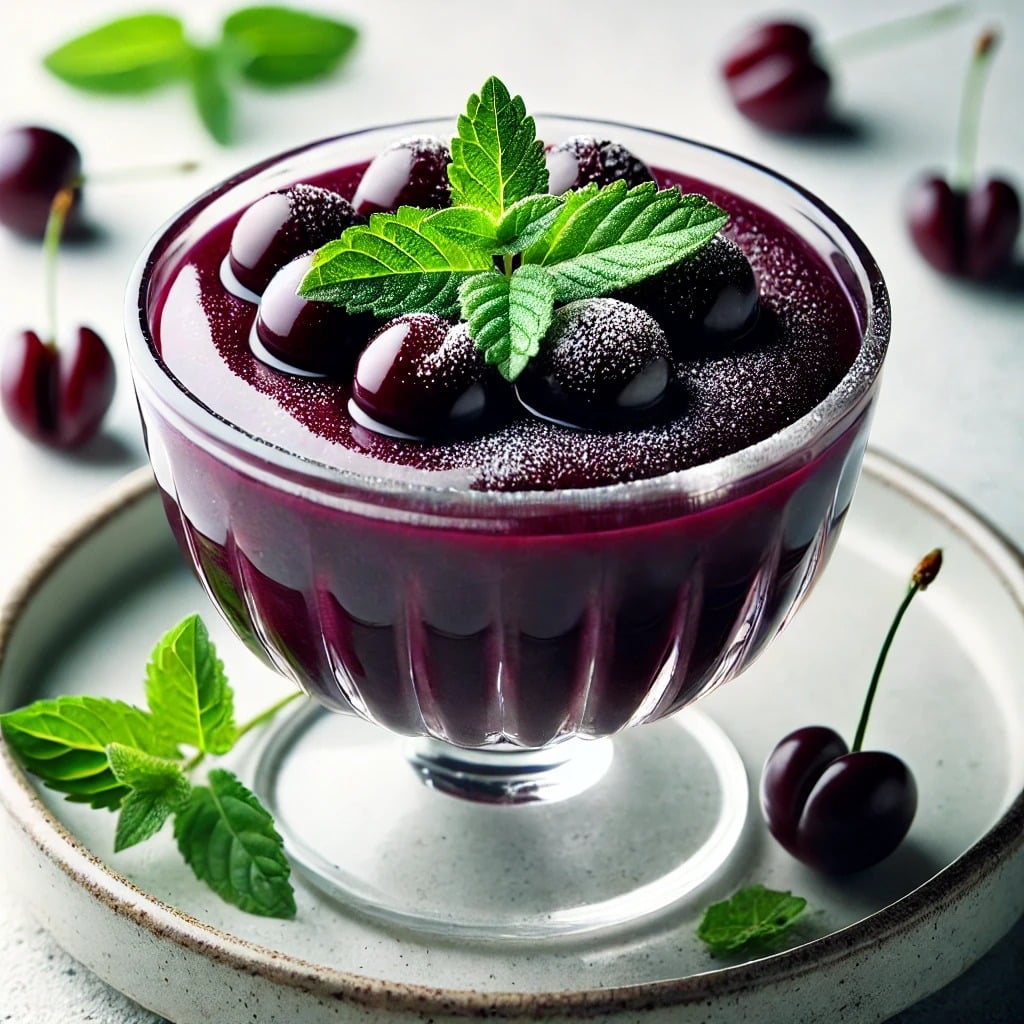A Wild Berry Worth Chasing
I’ve spent a good chunk of my culinary life chasing ingredients that aren’t on grocery shelves — things that grow wild, a little elusive, a little misunderstood. Chokecherries are exactly that. You’ll find them hanging in glossy purple clusters in forgotten corners of the woods, waiting for someone to turn them into something beautiful.
This chokecherry pudding is that something. It’s smooth, deeply flavored, with that signature wild tartness softened by just enough sugar and cream. There’s no fancy technique, just old-world instincts and a little patience.
What Makes Chokecherries So Special?
Chokecherries (Prunus virginiana) aren’t your average fruit. They’re bold. Unapologetically tart. They’ve been around forever, used by Indigenous peoples in pemmican, preserves, and pastes. And when cooked right, they’re hauntingly delicious part tart cherry, part almond, part something you can’t quite name.
If you’re looking for a dessert that tells a story, chokecherry pudding is it.
Chokecherry Pudding Recipe
Equipment
- Medium saucepan
- cheesecloth or fine-mesh strainer
- Whisk
- mixing bowl
- Wooden spoon or spatula
- 4 serving dishes (small bowls, glasses)
Ingredients
- 2 cups chokecherry puree fresh or thawed frozen berries
- 1 cup full milk or almond/coconut milk.
- ½ cup granulated sugar or to taste.
- ¼ cup cornstarch or arrowroot for gluten-free
- 1 teaspoon vanilla extract.
- ¼ teaspoon salt.
- 1 tbsp butter optional; for richness
Instructions
- To make the puree: Simmer entire berries in water until they burst. Strain through cheesecloth or a mesh strainer, gently pressing to extract the juice and pulp. Discard the pits and skins.
- To combine with sugar, pour the chokecherry puree into a medium pot. Stir in the sugar and reheat slowly over medium heat until completely dissolved.
- Combine cornstarch and milk in a bowl, whisking until smooth.
- To blend and heat, slowly pour the milk mixture into the warm puree while constantly stirring.
- Cook until thick, stirring over medium heat. After 5-7 minutes, it should thicken to a pudding consistency, coating the back of a spoon.
- To add flavor, turn off the heat. Stir in the vanilla, salt, and butter, if using.
- Chill and pour into bowls or glasses. Cool to room temperature, then cover and refrigerate for 2 hours before serving.
Notes
Nutrition
Tips for Finding and Identifying Chokecherries
Chokecherries ripen in late summer and form dense clusters on bushes or small trees. They are typically found near riverbanks, forest margins, and open meadows, but are sometimes overlooked unless you know what you’re looking for.
They’re small, round, and dark purple-black when ripe. But don’t eat them raw! They contain trace compounds that need to be neutralized by heat. A short simmer is all it takes — and it makes their tartness shine.
No access to fresh ones? Try local farmers’ markets, wild food co-ops, or reputable foraging websites.
The Magic of Cooking Chokecherries
If you’ve never had them before, they might catch you off guard. Raw chokecherries are intensely astringent. But cooking them? That’s where the magic happens.
Simmering turns them into something entirely different — think sharp fruit mellowed into velvet. You can even add a splash of lemon juice or a bit of orange zest to brighten the flavor, depending on your mood.
Chokecherry Pudding FAQs
Absolutely. Thaw first, then simmer and strain like you would with fresh.
A little is fine — it adds rustic texture. But for super smooth pudding, strain twice.
Sure, but they’re less tannic. Add a drop of almond extract to mimic the chokecherry’s complexity.
3–4 days in the fridge, tightly covered. It won’t last long, though. Everyone wants seconds.
Cold, with a spoon. Fancy it up with a swirl of cream or a dash of spice on top.
Ideas for Dressing It Up
Want to turn this wild berry pudding into a dinner party star? Try these:
- Layered parfaits with granola or crumbled almond cookies
- Swirled into yogurt for breakfast with flair
- Tart filling: Use in a pie shell and top with meringue
- Dolloped over pancakes — trust me
- Topped with toasted nuts for crunch
Final Thoughts: Why This Dessert Is Worth the Hunt
Chokecherry pudding isn’t just a dessert — it’s a connection to the land. It’s a dish with roots, both literally and culturally. And when you get it right, it tastes like no other berry dessert out there — wild, bright, smooth, and completely satisfying.
If you’ve never foraged before, this is a beautiful reason to start. If you’re lucky enough to have chokecherries nearby, pick a few extra pounds and freeze the puree — you’ll want to make this again.
Here’s to slowing down, stirring slowly, and letting nature’s flavors shine.

5 thoughts on “Chokecherry Pudding: A Forager’s Velvet Dream Dessert”